
The share of Americans working from home skyrocketed during the pandemic. A recent Gallup study found that 45% of full-time workers in the United States – and two-thirds of white-collar workers – were doing their job remotely at least some of the time.
The shift is proving to be a positive development for millions of Americans. Gallup reports that over 90% of remote workers hope that the trend continues after the pandemic, citing the lack of commute time as the chief benefit. (Here is a look at the state where the most people are working from home.)
According to the U.S. Census Bureau, the average commute time in the United States is 26.9 minutes. For those who travel to and from work every Monday through Friday, this translates to about 4.5 hours per week, or nearly 10 days a year.
Of course, commute times vary from person to person, but in some parts of the country, workers are far more likely to have longer commutes than in others. Using census data, 24/7 Wall St. identified the metropolitan area with the longest commute in every state.
Among the metro areas on this list, average commute times range from 17.3 minutes up to 40 minutes. Over the course of a week, these commute times add up, from nearly three hours to well over six – and from six days to over two weeks over the course of a year. In most metro areas on this list, commuters spend half a day or more commuting per year than the typical commuter across the state as a whole.
In just over half of the metro areas on this list, the share of commuters using public transit exceeds the comparable statewide average. These metro areas include Boston and Chicago, where more than one in every 10 commuters use public transportation, and New York, where more than one in four do. In most cases, public transportation is less direct than simply driving from door to door, adding to overall commute time. Here is a look at the cities where people lose the most time driving each year.
Click here to see the city with the longest drives to work in every state
Click here to read our detailed methodology
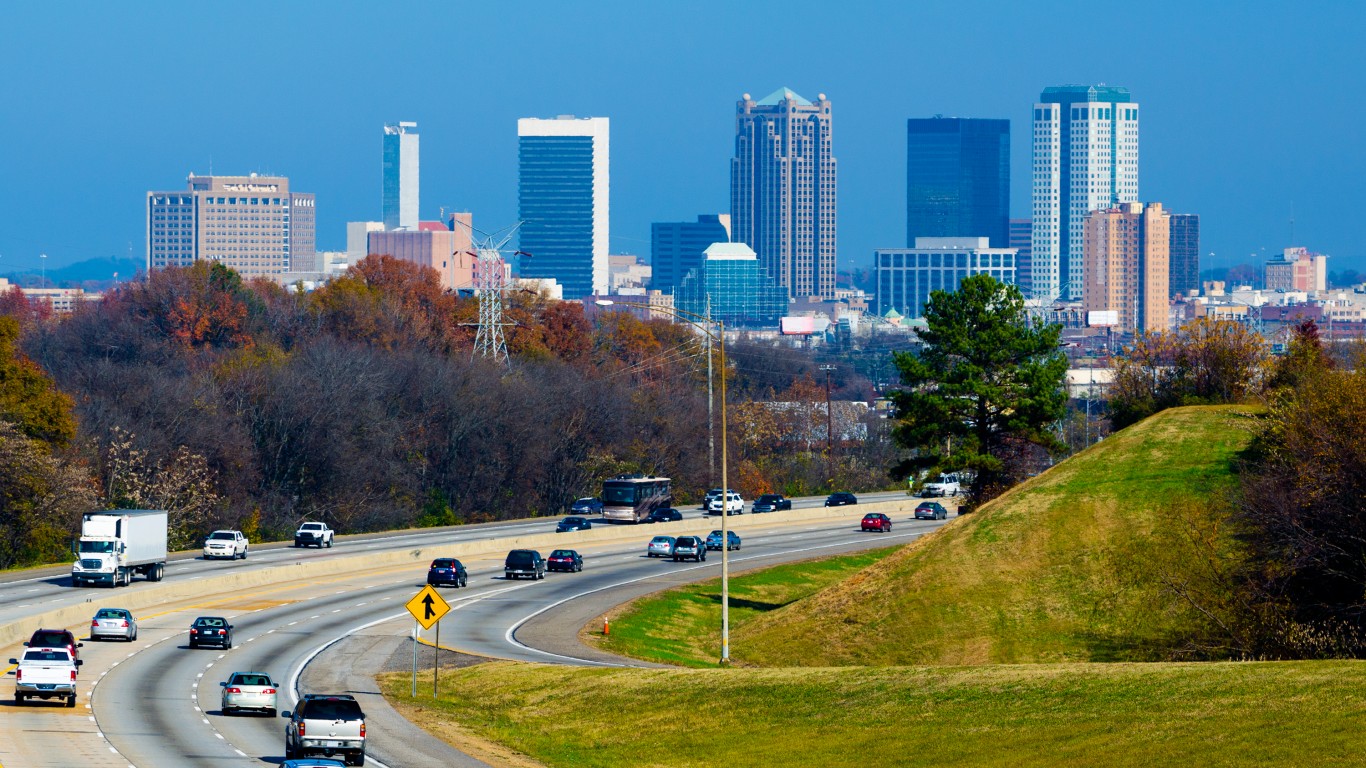
Alabama: Birmingham-Hoover
> Avg. commute time (minutes): 26.8 (Alabama: 25.2)
> Share of commuters driving alone: 83.5% (Alabama: 84.9%)
> Share of commuters carpooling: 8.5% (Alabama: 8.3%)
> Share of commuters using public transit: 0.5% (Alabama: 0.3%)
> No. of metros considered in ranking: 12
[in-text-ad]
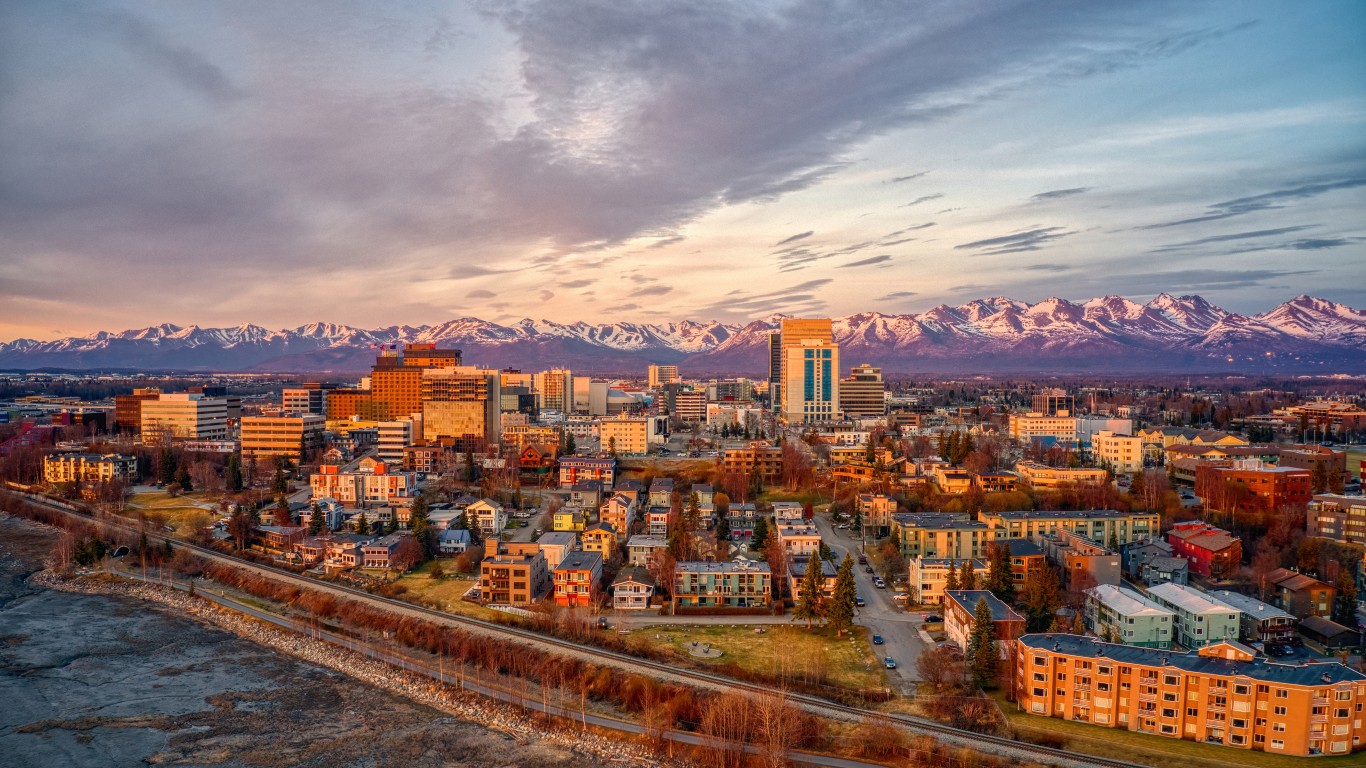
Alaska: Anchorage
> Avg. commute time (minutes): 22.2 (Alaska: 18.9)
> Share of commuters driving alone: 74.6% (Alaska: 68.1%)
> Share of commuters carpooling: 11.9% (Alaska: 12.1%)
> Share of commuters using public transit: 1.3% (Alaska: 1.2%)
> No. of metros considered in ranking: 2
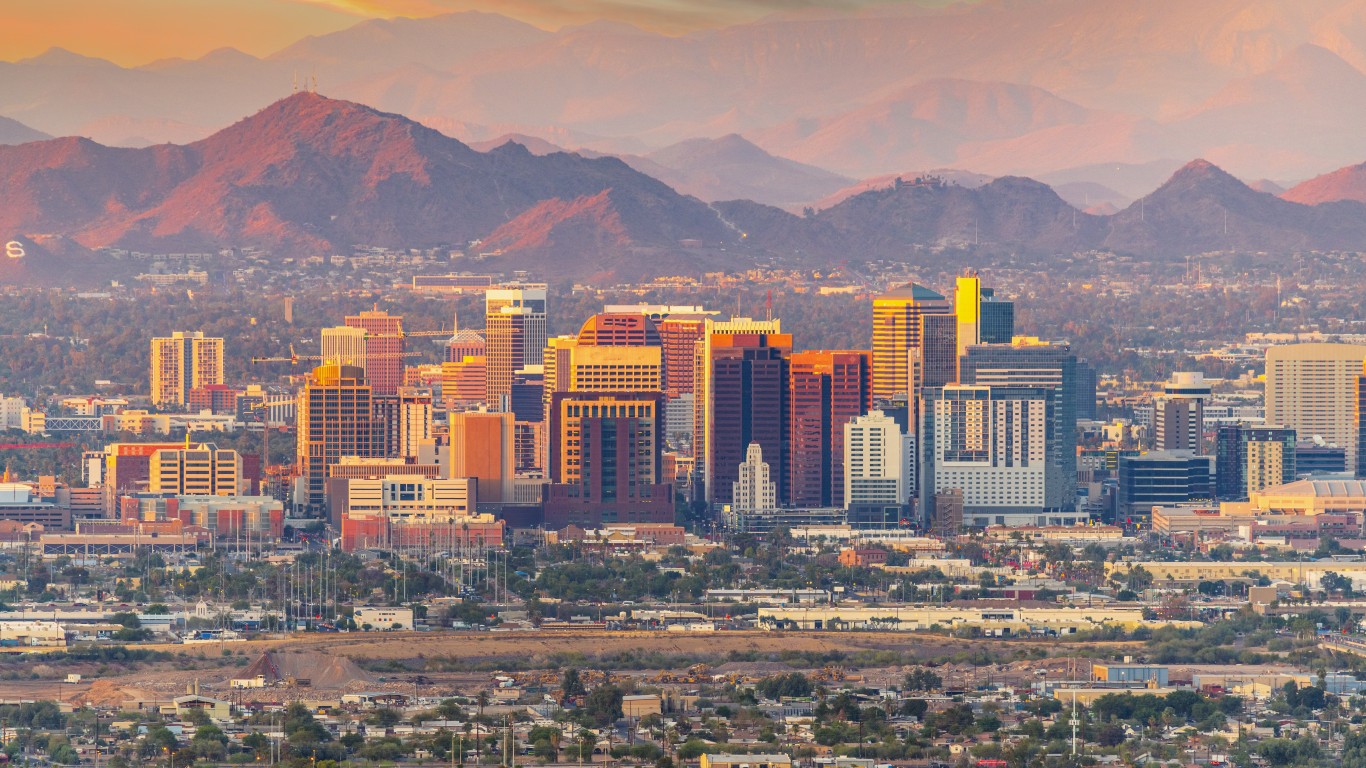
Arizona: Phoenix-Mesa-Chandler
> Avg. commute time (minutes): 26.9 (Arizona: 25.8)
> Share of commuters driving alone: 73.9% (Arizona: 74.5%)
> Share of commuters carpooling: 10.8% (Arizona: 10.7%)
> Share of commuters using public transit: 1.7% (Arizona: 1.6%)
> No. of metros considered in ranking: 7

Arkansas: Little Rock-North Little Rock-Conway
> Avg. commute time (minutes): 23.2 (Arkansas: 21.8)
> Share of commuters driving alone: 82.7% (Arkansas: 82.3%)
> Share of commuters carpooling: 9.6% (Arkansas: 10.2%)
> Share of commuters using public transit: 0.4% (Arkansas: 0.3%)
> No. of metros considered in ranking: 6
[in-text-ad-2]

California: Stockton
> Avg. commute time (minutes): 35.2 (California: 29.8)
> Share of commuters driving alone: 78.6% (California: 72.1%)
> Share of commuters carpooling: 12.2% (California: 10.0%)
> Share of commuters using public transit: 1.6% (California: 4.6%)
> No. of metros considered in ranking: 26
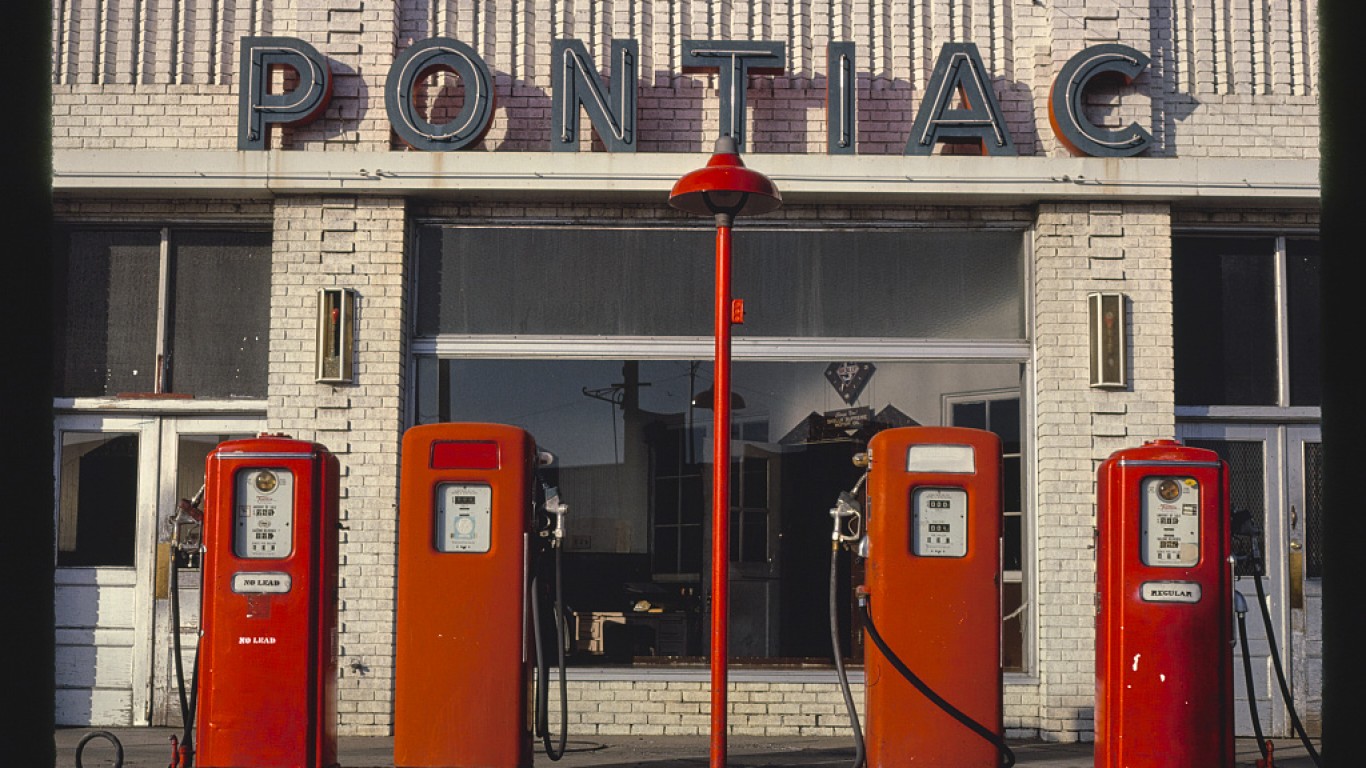
Colorado: Greeley
> Avg. commute time (minutes): 27.9 (Colorado: 25.8)
> Share of commuters driving alone: 78.4% (Colorado: 72.9%)
> Share of commuters carpooling: 10.4% (Colorado: 8.6%)
> Share of commuters using public transit: 0.4% (Colorado: 2.8%)
> No. of metros considered in ranking: 7
[in-text-ad]

Connecticut: Bridgeport-Stamford-Norwalk
> Avg. commute time (minutes): 31.4 (Connecticut: 26.7)
> Share of commuters driving alone: 69.5% (Connecticut: 76.3%)
> Share of commuters carpooling: 8.3% (Connecticut: 7.8%)
> Share of commuters using public transit: 9.3% (Connecticut: 4.4%)
> No. of metros considered in ranking: 4
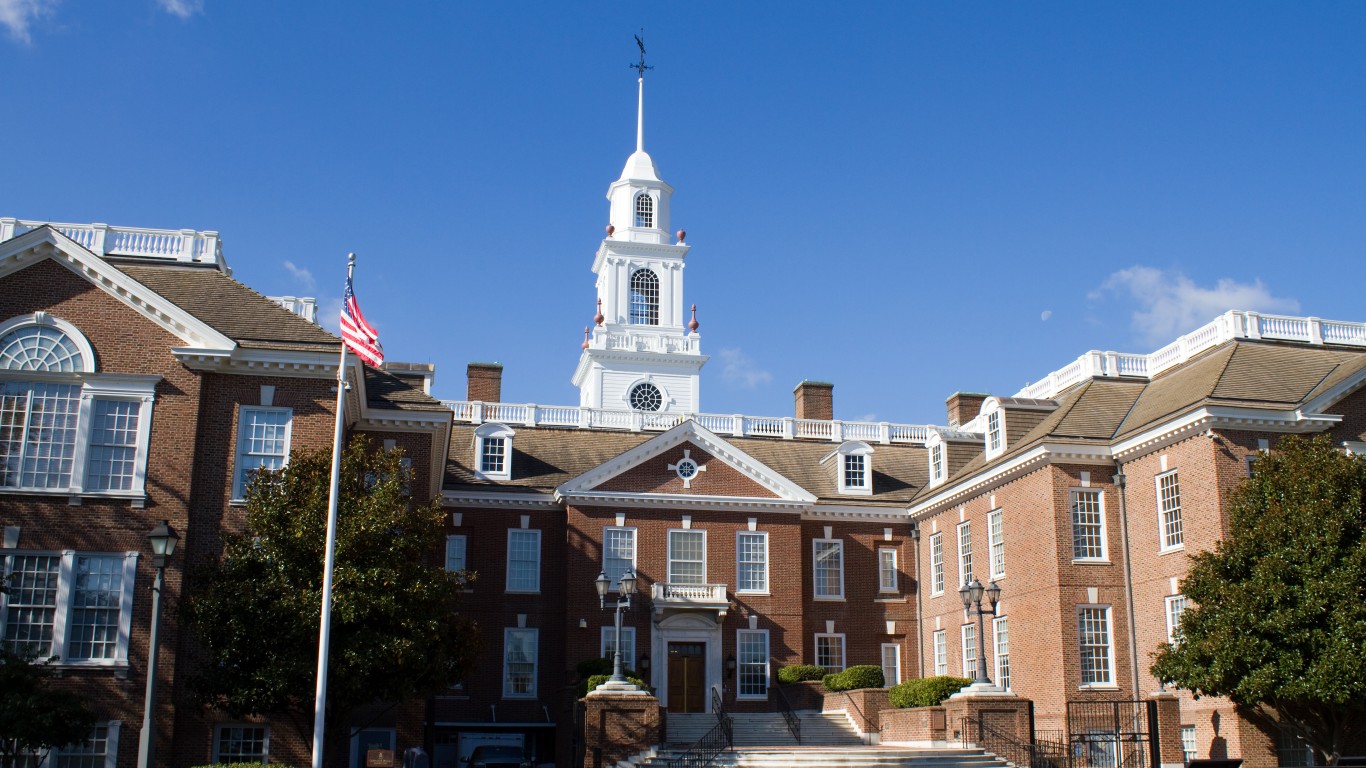
Delaware: Dover
> Avg. commute time (minutes): 26.3 (Delaware: 26.2)
> Share of commuters driving alone: 81.2% (Delaware: 78.8%)
> Share of commuters carpooling: 9.5% (Delaware: 8.6%)
> Share of commuters using public transit: 0.8% (Delaware: 2.2%)
> No. of metros considered in ranking: 1
*Because Dover is the only eligible metro in Delaware, it is the metro with the longest average commute time by default.
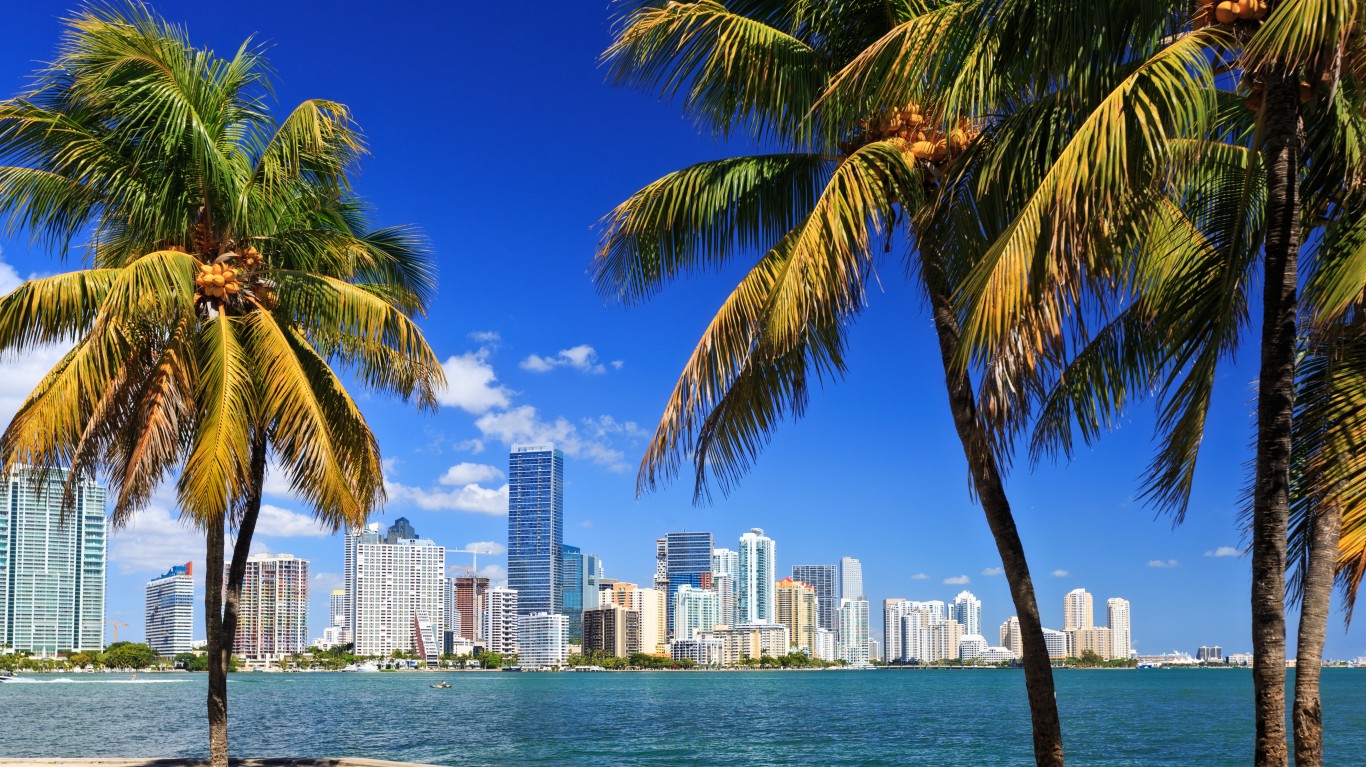
Florida: Miami-Fort Lauderdale-Pompano Beach
> Avg. commute time (minutes): 29.9 (Florida: 27.9)
> Share of commuters driving alone: 76.7% (Florida: 77.7%)
> Share of commuters carpooling: 9.2% (Florida: 9.2%)
> Share of commuters using public transit: 3.0% (Florida: 1.6%)
> No. of metros considered in ranking: 22
[in-text-ad-2]
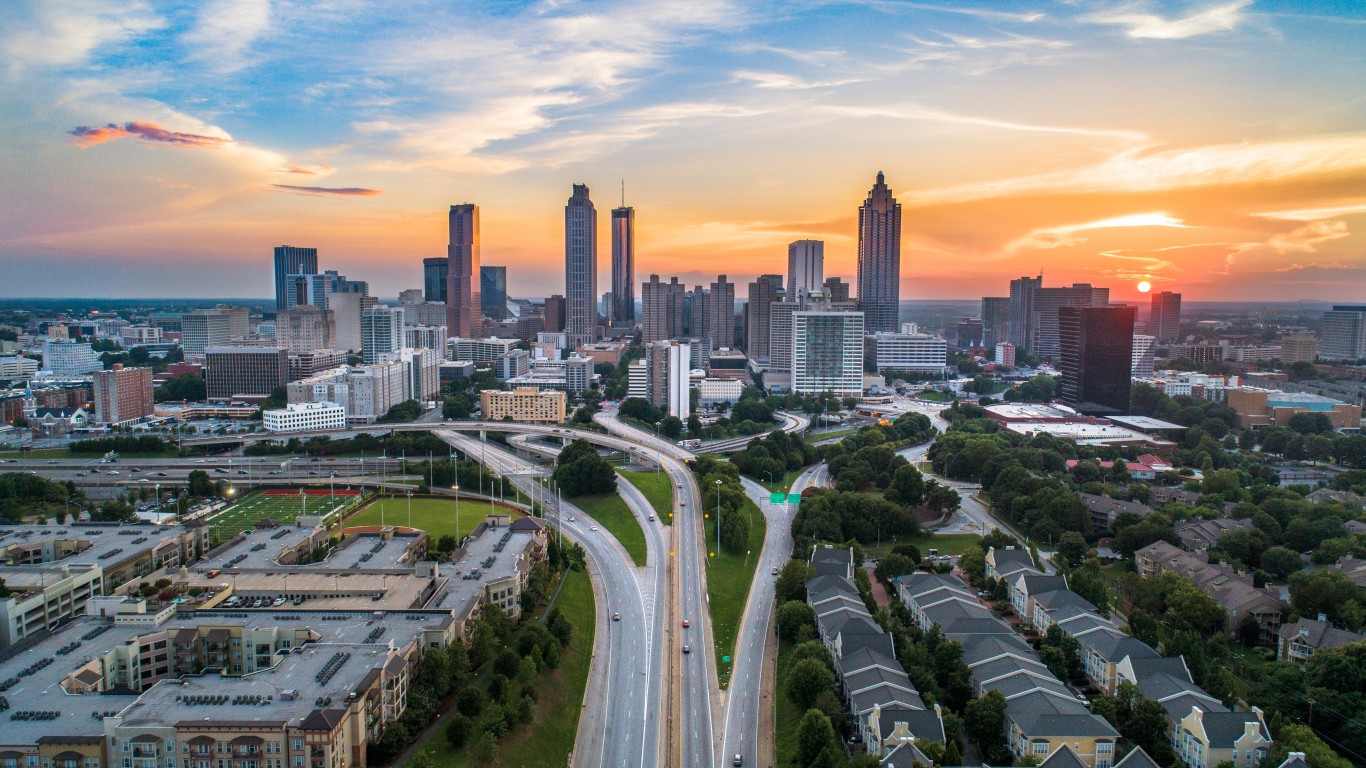
Georgia: Atlanta-Sandy Springs-Alpharetta
> Avg. commute time (minutes): 32.1 (Georgia: 28.7)
> Share of commuters driving alone: 75.2% (Georgia: 77.7%)
> Share of commuters carpooling: 9.0% (Georgia: 9.3%)
> Share of commuters using public transit: 2.8% (Georgia: 1.9%)
> No. of metros considered in ranking: 14

Hawaii: Urban Honolulu
> Avg. commute time (minutes): 28.4 (Hawaii: 27.1)
> Share of commuters driving alone: 65.2% (Hawaii: 67.6%)
> Share of commuters carpooling: 13.4% (Hawaii: 13.4%)
> Share of commuters using public transit: 7.1% (Hawaii: 5.5%)
> No. of metros considered in ranking: 2
[in-text-ad]

Idaho: Boise City
> Avg. commute time (minutes): 22.6 (Idaho: 21.2)
> Share of commuters driving alone: 78.1% (Idaho: 77.8%)
> Share of commuters carpooling: 8.3% (Idaho: 9.3%)
> Share of commuters using public transit: 0.3% (Idaho: 0.6%)
> No. of metros considered in ranking: 6
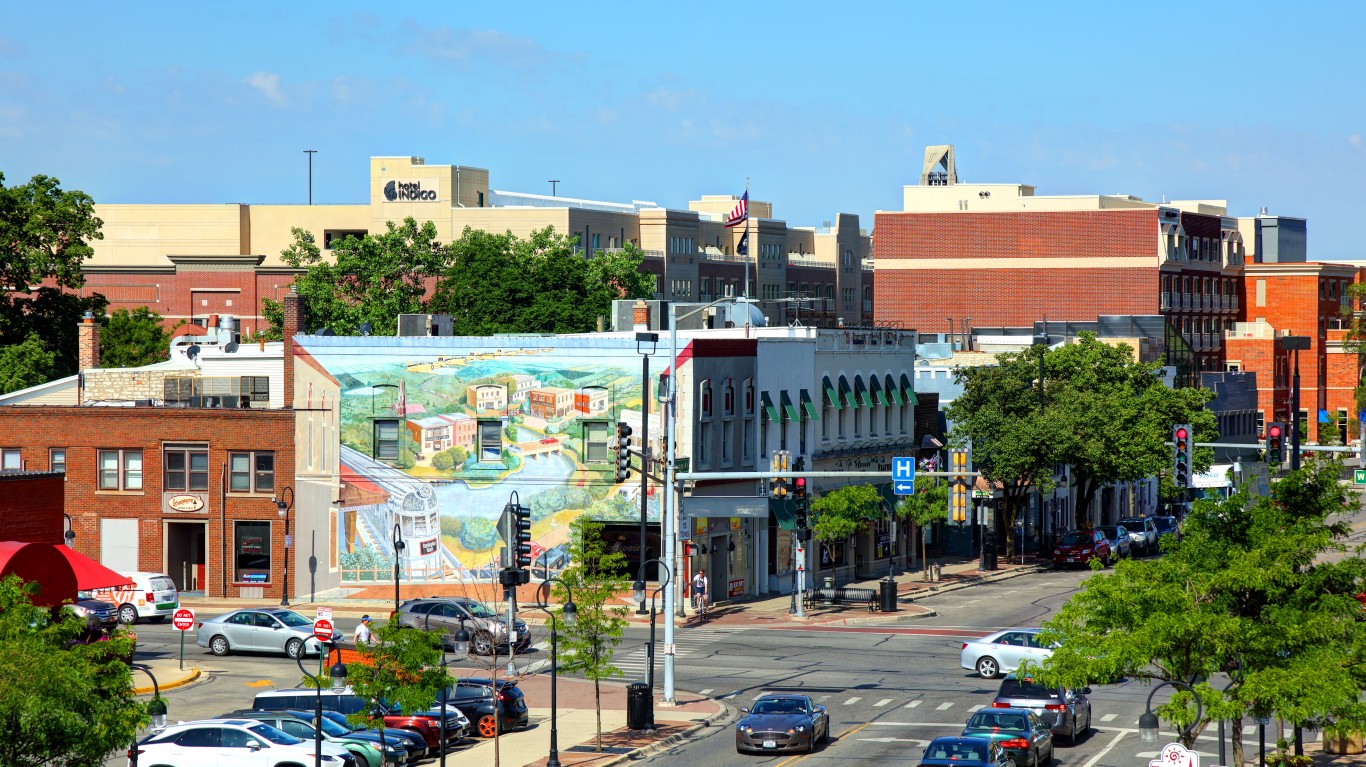
Illinois: Chicago-Naperville-Elgin
> Avg. commute time (minutes): 31.8 (Illinois: 29.0)
> Share of commuters driving alone: 68.3% (Illinois: 71.5%)
> Share of commuters carpooling: 7.7% (Illinois: 7.8%)
> Share of commuters using public transit: 11.3% (Illinois: 8.8%)
> No. of metros considered in ranking: 10

Indiana: Indianapolis-Carmel-Anderson
> Avg. commute time (minutes): 25.3 (Indiana: 23.9)
> Share of commuters driving alone: 80.8% (Indiana: 81.3%)
> Share of commuters carpooling: 8.2% (Indiana: 9.0%)
> Share of commuters using public transit: 0.8% (Indiana: 0.9%)
> No. of metros considered in ranking: 12
[in-text-ad-2]
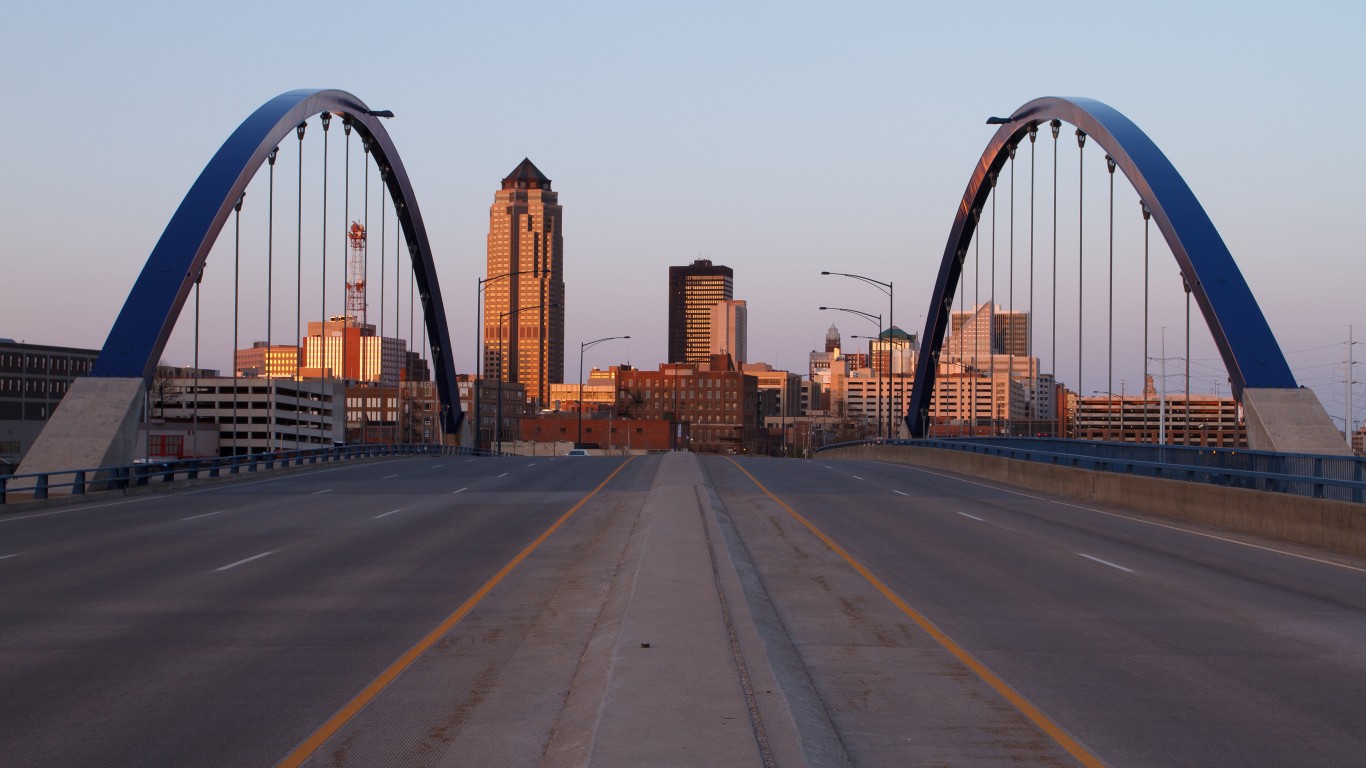
Iowa: Des Moines-West Des Moines
> Avg. commute time (minutes): 20.7 (Iowa: 19.5)
> Share of commuters driving alone: 81.4% (Iowa: 80.2%)
> Share of commuters carpooling: 7.7% (Iowa: 8.0%)
> Share of commuters using public transit: 0.9% (Iowa: 0.9%)
> No. of metros considered in ranking: 8
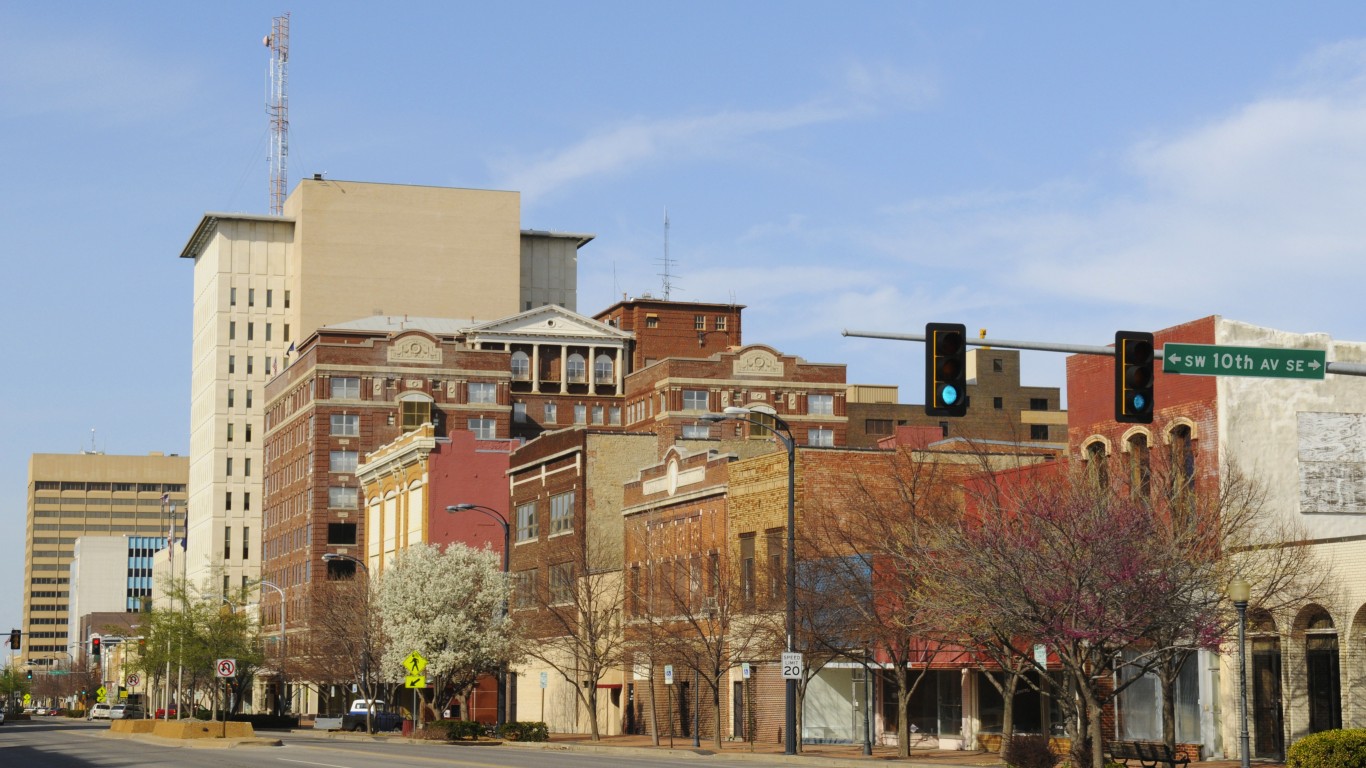
Kansas: Topeka
> Avg. commute time (minutes): 20.6 (Kansas: 19.6)
> Share of commuters driving alone: 81.0% (Kansas: 80.7%)
> Share of commuters carpooling: 10.1% (Kansas: 8.9%)
> Share of commuters using public transit: 0.8% (Kansas: 0.4%)
> No. of metros considered in ranking: 4
[in-text-ad]
Kentucky: Elizabethtown-Fort Knox
> Avg. commute time (minutes): 24.7 (Kentucky: 23.7)
> Share of commuters driving alone: 83.0% (Kentucky: 81.2%)
> Share of commuters carpooling: 9.4% (Kentucky: 9.2%)
> Share of commuters using public transit: 0.3% (Kentucky: 0.9%)
> No. of metros considered in ranking: 5
Louisiana: Hammond
> Avg. commute time (minutes): 31.3 (Louisiana: 25.8)
> Share of commuters driving alone: 80.2% (Louisiana: 81.9%)
> Share of commuters carpooling: 12.7% (Louisiana: 9.0%)
> Share of commuters using public transit: 0.2% (Louisiana: 1.1%)
> No. of metros considered in ranking: 9

Maine: Portland-South Portland
> Avg. commute time (minutes): 24.9 (Maine: 24.3)
> Share of commuters driving alone: 76.3% (Maine: 77.2%)
> Share of commuters carpooling: 8.1% (Maine: 9.2%)
> Share of commuters using public transit: 0.9% (Maine: 0.5%)
> No. of metros considered in ranking: 3
[in-text-ad-2]
Maryland: California-Lexington Park
> Avg. commute time (minutes): 31.7 (Maryland: 33.0)
> Share of commuters driving alone: 80.0% (Maryland: 72.1%)
> Share of commuters carpooling: 8.3% (Maryland: 8.6%)
> Share of commuters using public transit: 1.5% (Maryland: 7.4%)
> No. of metros considered in ranking: 5

Massachusetts: Boston-Cambridge-Newton
> Avg. commute time (minutes): 31.5 (Massachusetts: 30.0)
> Share of commuters driving alone: 64.4% (Massachusetts: 68.0%)
> Share of commuters carpooling: 6.9% (Massachusetts: 7.3%)
> Share of commuters using public transit: 12.3% (Massachusetts: 9.5%)
> No. of metros considered in ranking: 5
[in-text-ad]

Michigan: Detroit-Warren-Dearborn
> Avg. commute time (minutes): 27.0 (Michigan: 24.6)
> Share of commuters driving alone: 81.7% (Michigan: 80.7%)
> Share of commuters carpooling: 8.2% (Michigan: 8.6%)
> Share of commuters using public transit: 1.3% (Michigan: 1.3%)
> No. of metros considered in ranking: 14
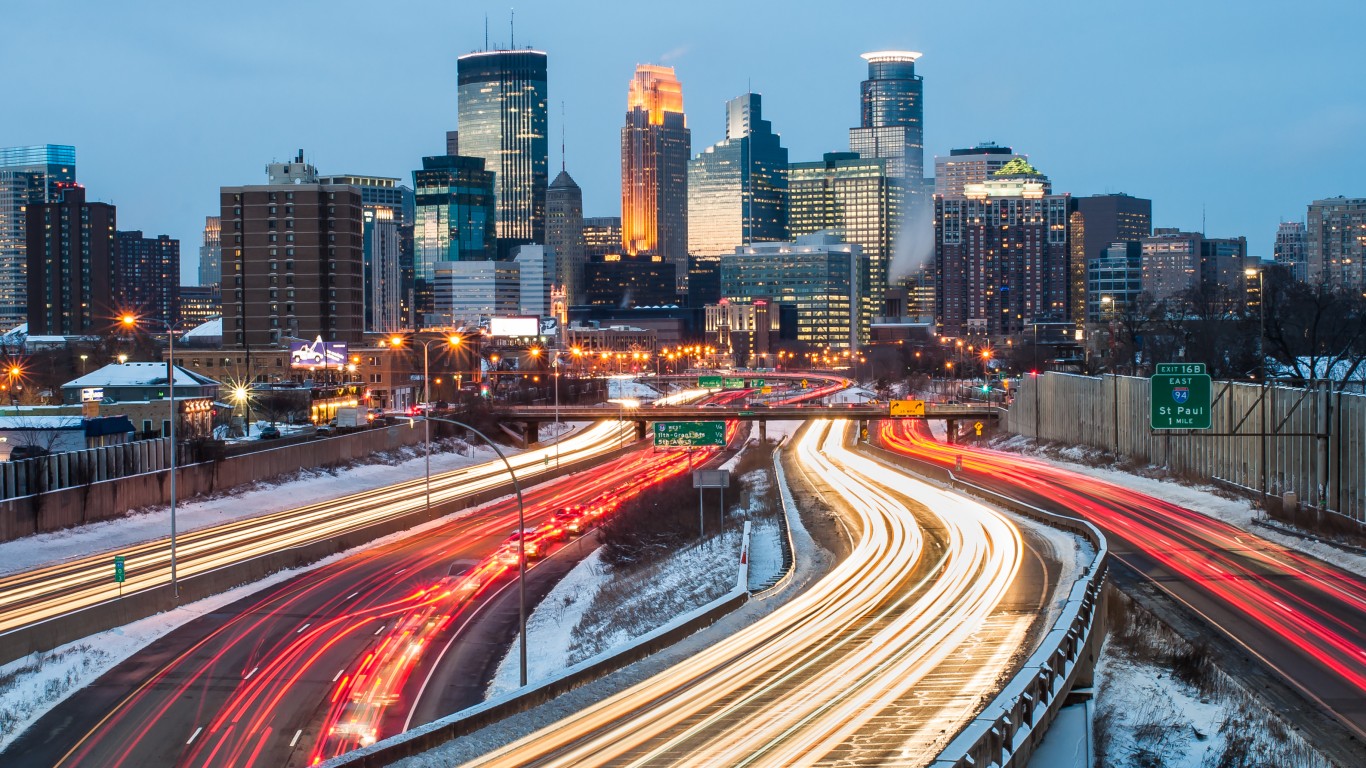
Minnesota: Minneapolis-St. Paul-Bloomington
> Avg. commute time (minutes): 25.6 (Minnesota: 23.8)
> Share of commuters driving alone: 75.0% (Minnesota: 76.0%)
> Share of commuters carpooling: 7.8% (Minnesota: 8.1%)
> Share of commuters using public transit: 4.2% (Minnesota: 3.2%)
> No. of metros considered in ranking: 5

Mississippi: Gulfport-Biloxi
> Avg. commute time (minutes): 25.6 (Mississippi: 25.2)
> Share of commuters driving alone: 83.8% (Mississippi: 84.6%)
> Share of commuters carpooling: 8.6% (Mississippi: 9.2%)
> Share of commuters using public transit: 0.2% (Mississippi: 0.3%)
> No. of metros considered in ranking: 3
[in-text-ad-2]

Missouri: St. Louis
> Avg. commute time (minutes): 25.8 (Missouri: 23.9)
> Share of commuters driving alone: 81.3% (Missouri: 80.8%)
> Share of commuters carpooling: 7.0% (Missouri: 8.4%)
> Share of commuters using public transit: 1.9% (Missouri: 1.2%)
> No. of metros considered in ranking: 8

Montana: Billings
> Avg. commute time (minutes): 19.5 (Montana: 18.4)
> Share of commuters driving alone: 81.0% (Montana: 75.2%)
> Share of commuters carpooling: 8.6% (Montana: 9.2%)
> Share of commuters using public transit: 0.9% (Montana: 0.7%)
> No. of metros considered in ranking: 3
[in-text-ad]
Nebraska: Omaha-Council Bluffs
> Avg. commute time (minutes): 20.7 (Nebraska: 18.9)
> Share of commuters driving alone: 81.7% (Nebraska: 80.7%)
> Share of commuters carpooling: 8.2% (Nebraska: 9.0%)
> Share of commuters using public transit: 0.8% (Nebraska: 0.6%)
> No. of metros considered in ranking: 3

Nevada: Las Vegas-Henderson-Paradise
> Avg. commute time (minutes): 25.1 (Nevada: 24.6)
> Share of commuters driving alone: 77.5% (Nevada: 76.8%)
> Share of commuters carpooling: 10.1% (Nevada: 10.6%)
> Share of commuters using public transit: 3.0% (Nevada: 2.9%)
> No. of metros considered in ranking: 3

New Hampshire: Manchester-Nashua
> Avg. commute time (minutes): 28.0 (New Hampshire: 27.4)
> Share of commuters driving alone: 80.3% (New Hampshire: 79.5%)
> Share of commuters carpooling: 7.4% (New Hampshire: 7.7%)
> Share of commuters using public transit: 0.8% (New Hampshire: 0.8%)
> No. of metros considered in ranking: 1
*Because Manchester-Nashua is the only eligible metro in New Hampshire, it is the metro with the longest average commute time by default.
[in-text-ad-2]

New Jersey: Trenton-Princeton
> Avg. commute time (minutes): 28.6 (New Jersey: 32.0)
> Share of commuters driving alone: 68.5% (New Jersey: 69.6%)
> Share of commuters carpooling: 10.6% (New Jersey: 7.8%)
> Share of commuters using public transit: 6.7% (New Jersey: 10.8%)
> No. of metros considered in ranking: 4
New Mexico: Farmington
> Avg. commute time (minutes): 24.3 (New Mexico: 22.7)
> Share of commuters driving alone: 84.3% (New Mexico: 79.1%)
> Share of commuters carpooling: 9.4% (New Mexico: 10.0%)
> Share of commuters using public transit: 0.3% (New Mexico: 1.0%)
> No. of metros considered in ranking: 4
[in-text-ad]

New York: New York-Newark-Jersey City
> Avg. commute time (minutes): 37.0 (New York: 33.5)
> Share of commuters driving alone: 48.5% (New York: 52.3%)
> Share of commuters carpooling: 6.3% (New York: 6.4%)
> Share of commuters using public transit: 29.8% (New York: 26.2%)
> No. of metros considered in ranking: 13

North Carolina: Charlotte-Concord-Gastonia
> Avg. commute time (minutes): 27.1 (North Carolina: 24.9)
> Share of commuters driving alone: 77.6% (North Carolina: 79.3%)
> Share of commuters carpooling: 9.0% (North Carolina: 9.0%)
> Share of commuters using public transit: 1.4% (North Carolina: 1.0%)
> No. of metros considered in ranking: 15

North Dakota: Bismarck
> Avg. commute time (minutes): 18.9 (North Dakota: 17.6)
> Share of commuters driving alone: 83.7% (North Dakota: 80.8%)
> Share of commuters carpooling: 8.8% (North Dakota: 8.9%)
> Share of commuters using public transit: 0.2% (North Dakota: 0.5%)
> No. of metros considered in ranking: 3
[in-text-ad-2]

Ohio: Cincinnati
> Avg. commute time (minutes): 25.2 (Ohio: 23.7)
> Share of commuters driving alone: 80.6% (Ohio: 81.5%)
> Share of commuters carpooling: 7.9% (Ohio: 7.6%)
> Share of commuters using public transit: 1.6% (Ohio: 1.4%)
> No. of metros considered in ranking: 11

Oklahoma: Oklahoma City
> Avg. commute time (minutes): 22.9 (Oklahoma: 22.0)
> Share of commuters driving alone: 81.9% (Oklahoma: 81.6%)
> Share of commuters carpooling: 9.4% (Oklahoma: 9.7%)
> Share of commuters using public transit: 0.4% (Oklahoma: 0.4%)
> No. of metros considered in ranking: 4
[in-text-ad]
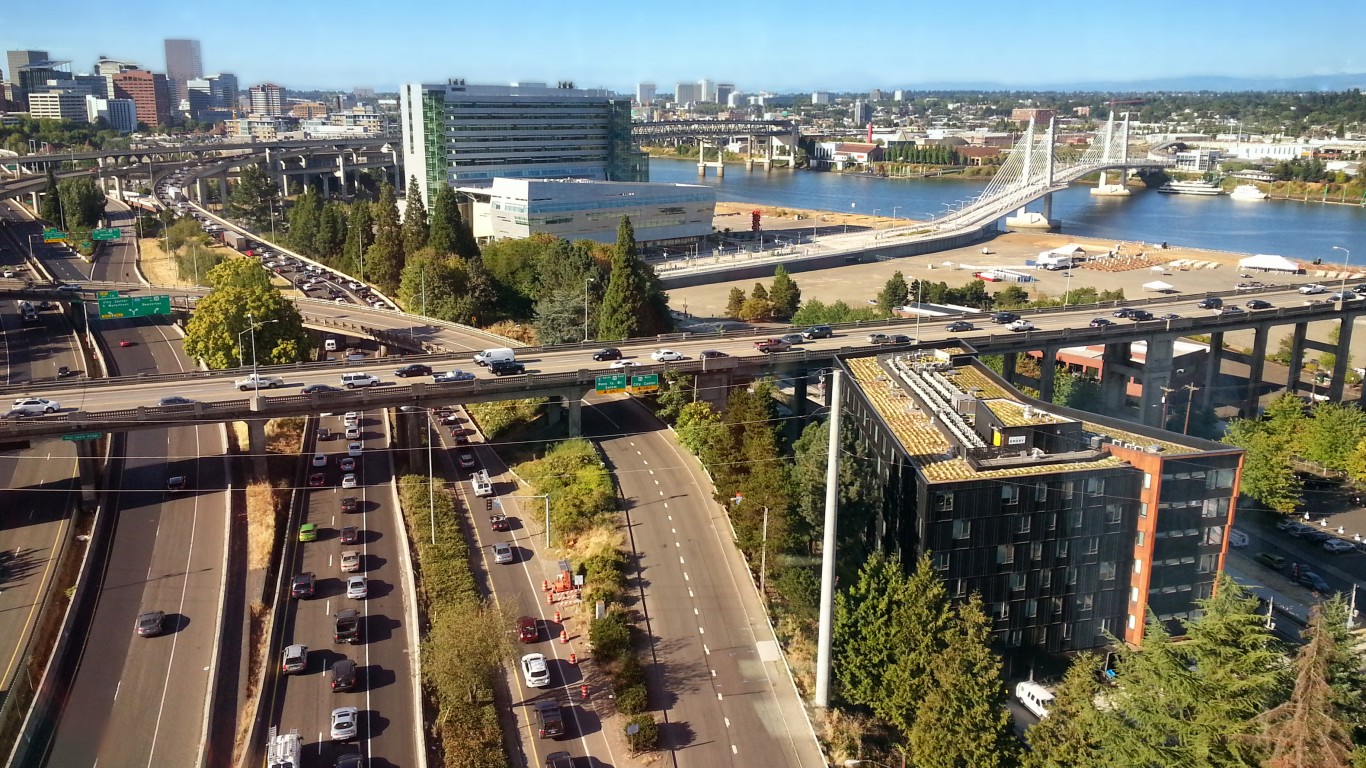
Oregon: Portland-Vancouver-Hillsboro
> Avg. commute time (minutes): 26.9 (Oregon: 23.9)
> Share of commuters driving alone: 68.6% (Oregon: 70.5%)
> Share of commuters carpooling: 8.8% (Oregon: 9.4%)
> Share of commuters using public transit: 5.8% (Oregon: 4.0%)
> No. of metros considered in ranking: 8

Pennsylvania: East Stroudsburg
> Avg. commute time (minutes): 40.0 (Pennsylvania: 27.1)
> Share of commuters driving alone: 77.4% (Pennsylvania: 74.4%)
> Share of commuters carpooling: 10.6% (Pennsylvania: 8.2%)
> Share of commuters using public transit: 3.5% (Pennsylvania: 5.2%)
> No. of metros considered in ranking: 18

Rhode Island: Providence-Warwick
> Avg. commute time (minutes): 26.4 (Rhode Island: 25.3)
> Share of commuters driving alone: 79.8% (Rhode Island: 79.7%)
> Share of commuters carpooling: 8.2% (Rhode Island: 8.1%)
> Share of commuters using public transit: 2.3% (Rhode Island: 2.2%)
> No. of metros considered in ranking: 1
*Because Providence-Warwick is the only eligible metro in Rhode Island, it is the metro with the longest average commute time by default.
[in-text-ad-2]

South Carolina: Charleston-North Charleston
> Avg. commute time (minutes): 26.6 (South Carolina: 25.1)
> Share of commuters driving alone: 80.9% (South Carolina: 81.5%)
> Share of commuters carpooling: 7.6% (South Carolina: 8.9%)
> Share of commuters using public transit: 0.8% (South Carolina: 0.5%)
> No. of metros considered in ranking: 8
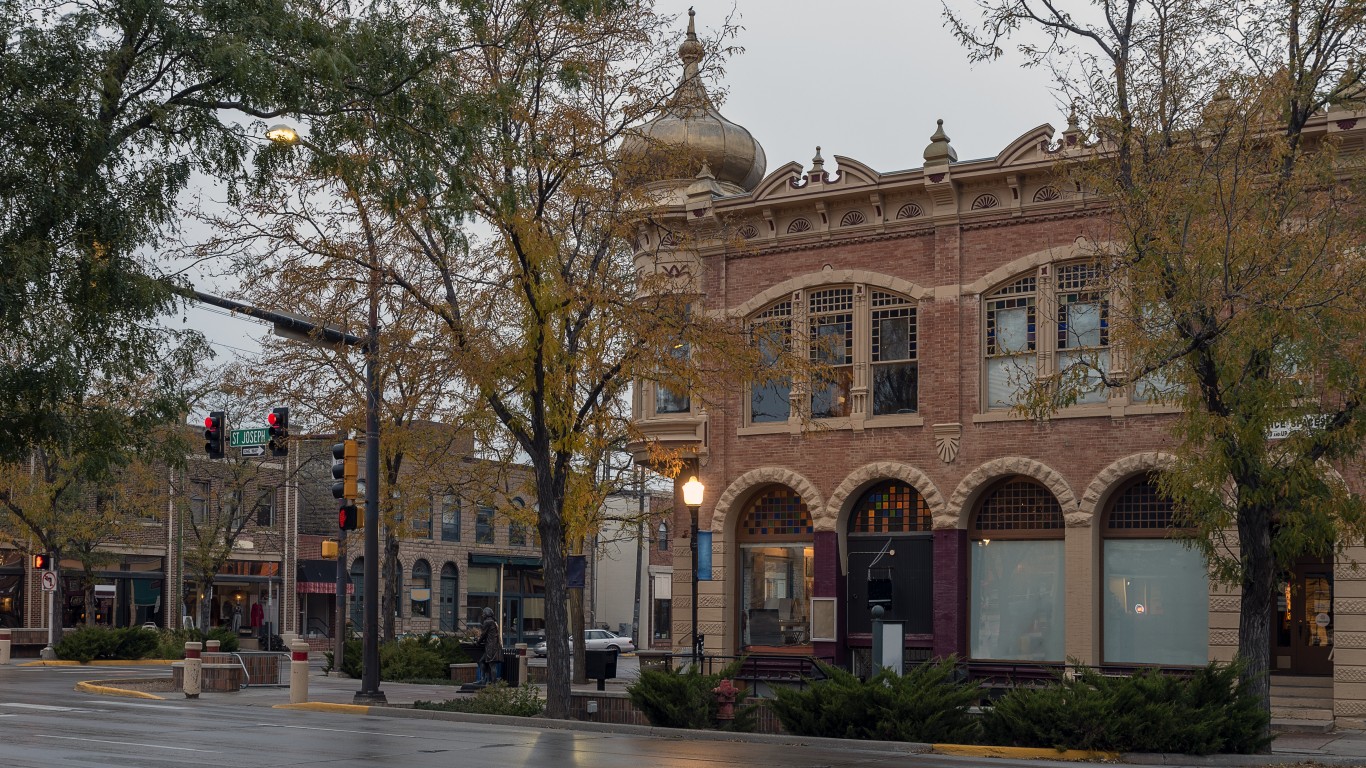
South Dakota: Rapid City
> Avg. commute time (minutes): 19.1 (South Dakota: 17.3)
> Share of commuters driving alone: 80.7% (South Dakota: 80.0%)
> Share of commuters carpooling: 8.2% (South Dakota: 8.1%)
> Share of commuters using public transit: 0.7% (South Dakota: 0.5%)
> No. of metros considered in ranking: 2
[in-text-ad]

Tennessee: Nashville-Davidson-Murfreesboro-Franklin
> Avg. commute time (minutes): 28.1 (Tennessee: 25.4)
> Share of commuters driving alone: 79.1% (Tennessee: 81.9%)
> Share of commuters carpooling: 8.7% (Tennessee: 8.8%)
> Share of commuters using public transit: 0.9% (Tennessee: 0.6%)
> No. of metros considered in ranking: 10
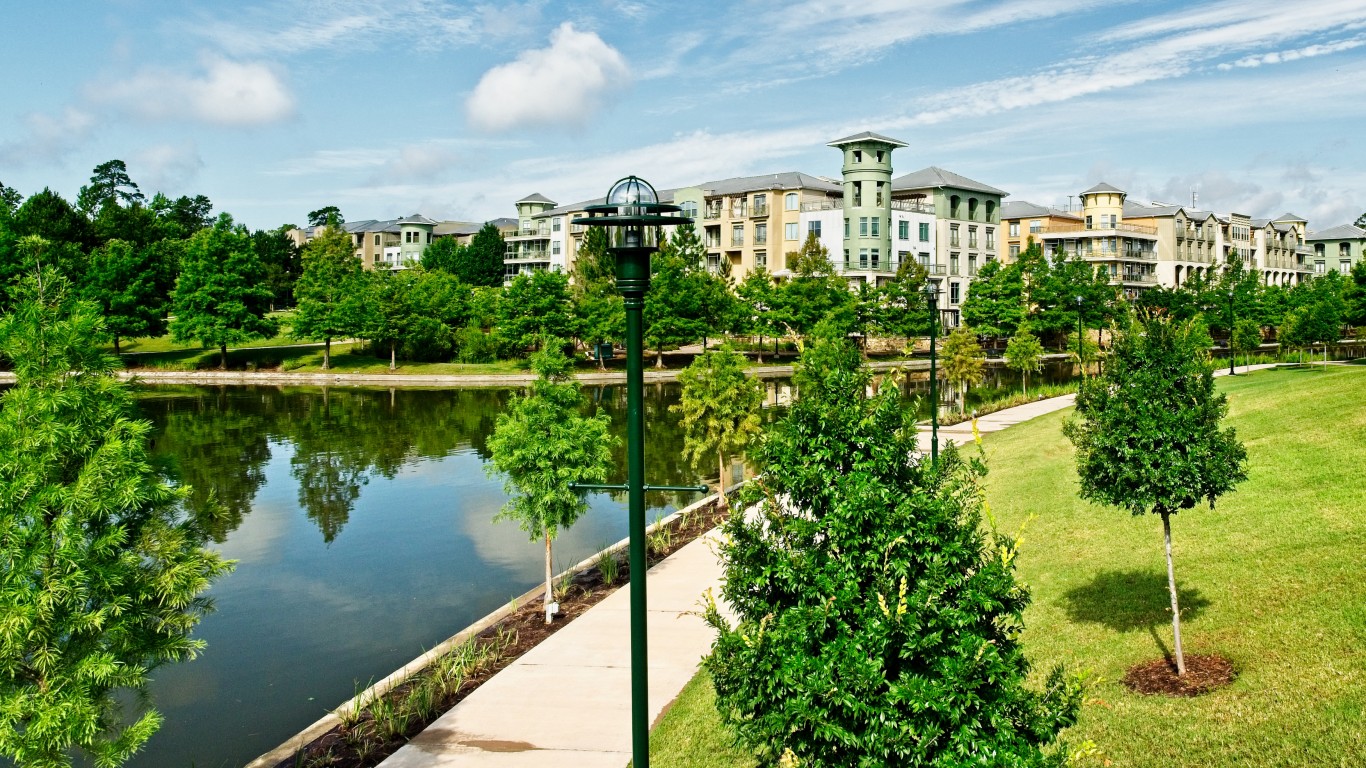
Texas: Houston-The Woodlands-Sugar Land
> Avg. commute time (minutes): 30.0 (Texas: 26.6)
> Share of commuters driving alone: 78.9% (Texas: 78.7%)
> Share of commuters carpooling: 9.6% (Texas: 9.9%)
> Share of commuters using public transit: 1.9% (Texas: 1.3%)
> No. of metros considered in ranking: 25
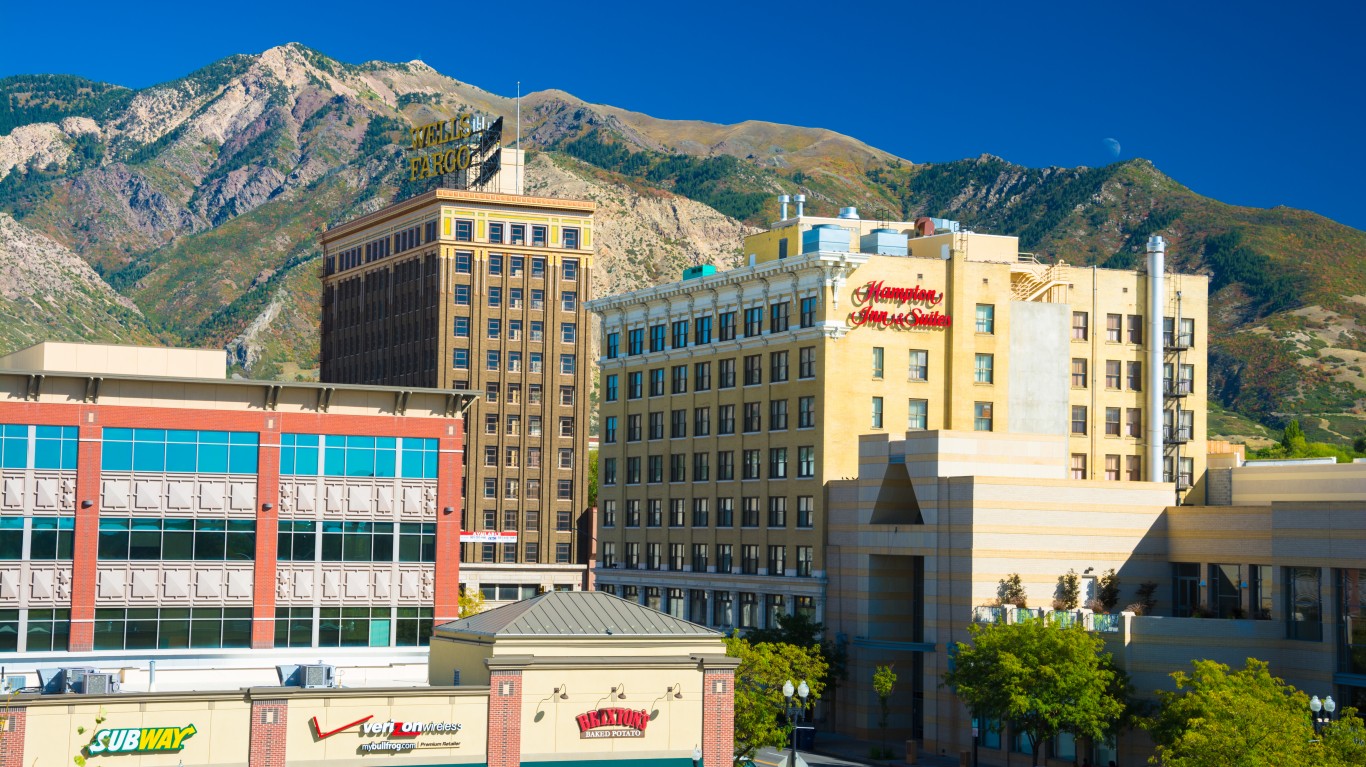
Utah: Ogden-Clearfield
> Avg. commute time (minutes): 23.3 (Utah: 22.0)
> Share of commuters driving alone: 78.5% (Utah: 74.4%)
> Share of commuters carpooling: 9.4% (Utah: 10.4%)
> Share of commuters using public transit: 1.5% (Utah: 2.2%)
> No. of metros considered in ranking: 5
[in-text-ad-2]

Vermont: Burlington-South Burlington
> Avg. commute time (minutes): 22.8 (Vermont: 23.3)
> Share of commuters driving alone: 72.6% (Vermont: 74.4%)
> Share of commuters carpooling: 8.3% (Vermont: 8.5%)
> Share of commuters using public transit: 2.1% (Vermont: 1.2%)
> No. of metros considered in ranking: 1
*Because Burlington-South Burlington is the only eligible metro in Vermont, it is the metro with the longest average commute time by default.

Virginia: Winchester
> Avg. commute time (minutes): 32.0 (Virginia: 28.6)
> Share of commuters driving alone: 80.9% (Virginia: 74.9%)
> Share of commuters carpooling: 9.7% (Virginia: 8.9%)
> Share of commuters using public transit: 0.3% (Virginia: 4.0%)
> No. of metros considered in ranking: 9
[in-text-ad]

Washington: Seattle-Tacoma-Bellevue
> Avg. commute time (minutes): 31.0 (Washington: 28.0)
> Share of commuters driving alone: 64.9% (Washington: 69.7%)
> Share of commuters carpooling: 9.8% (Washington: 9.7%)
> Share of commuters using public transit: 9.1% (Washington: 6.0%)
> No. of metros considered in ranking: 11

West Virginia: Beckley
> Avg. commute time (minutes): 26.1 (West Virginia: 26.1)
> Share of commuters driving alone: 82.3% (West Virginia: 82.0%)
> Share of commuters carpooling: 9.7% (West Virginia: 8.6%)
> Share of commuters using public transit: 0.1% (West Virginia: 0.8%)
> No. of metros considered in ranking: 7

Wisconsin: Racine
> Avg. commute time (minutes): 24.6 (Wisconsin: 22.2)
> Share of commuters driving alone: 83.7% (Wisconsin: 79.9%)
> Share of commuters carpooling: 7.5% (Wisconsin: 7.7%)
> Share of commuters using public transit: 1.0% (Wisconsin: 1.5%)
> No. of metros considered in ranking: 12
[in-text-ad-2]

Wyoming: Casper
> Avg. commute time (minutes): 17.3 (Wyoming: 17.9)
> Share of commuters driving alone: 83.0% (Wyoming: 77.4%)
> Share of commuters carpooling: 8.4% (Wyoming: 10.0%)
> Share of commuters using public transit: 0.4% (Wyoming: 1.0%)
> No. of metros considered in ranking: 2
Methodology
To determine the metro area with the longest commutes in every state, 24/7 Wall St. reviewed five-year estimates of average commute times from the U.S. Census Bureau’s 2020 American Community Survey.
We used the 384 metropolitan statistical areas as delineated by the United States Office of Management and Budget and used by the Census Bureau as our definition of metros.
Metro areas were ranked based on their average commute time. To break ties, we used the share of workers with a commute of 45 minutes or longer.
Additional information on the share of commuters driving alone, carpooling, and using public transit are also five-year estimates from the 2020 ACS. Because the Census Bureau didn’t release one-year estimates for 2020 due to data collection issues caused by the COVID-19 pandemic, all ACS data are five-year estimates.
In 20 Years, I Haven’t Seen A Cash Back Card This Good
Credit card companies are at war, handing out free rewards and benefits to win the best customers. A good cash back card can be worth thousands of dollars a year in free money, not to mention other perks like travel, insurance, and access to fancy lounges. Our top pick today has pays up to 5% cash back, a $200 bonus on top, and $0 annual fee. Click here to apply before they stop offering rewards this generous.
Flywheel Publishing has partnered with CardRatings for our coverage of credit card products. Flywheel Publishing and CardRatings may receive a commission from card issuers.
Thank you for reading! Have some feedback for us?
Contact the 24/7 Wall St. editorial team.
 24/7 Wall St.
24/7 Wall St. 24/7 Wall St.
24/7 Wall St. 24/7 Wall St.
24/7 Wall St.
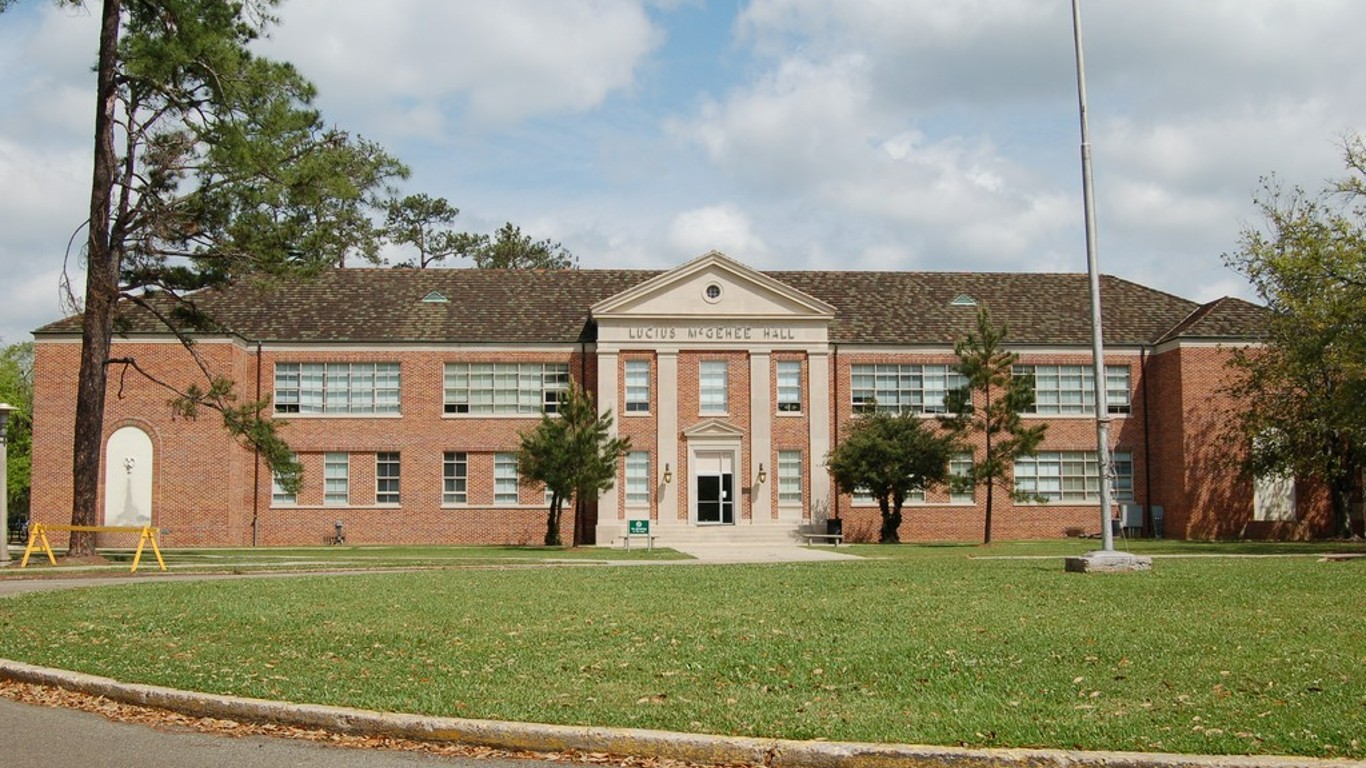

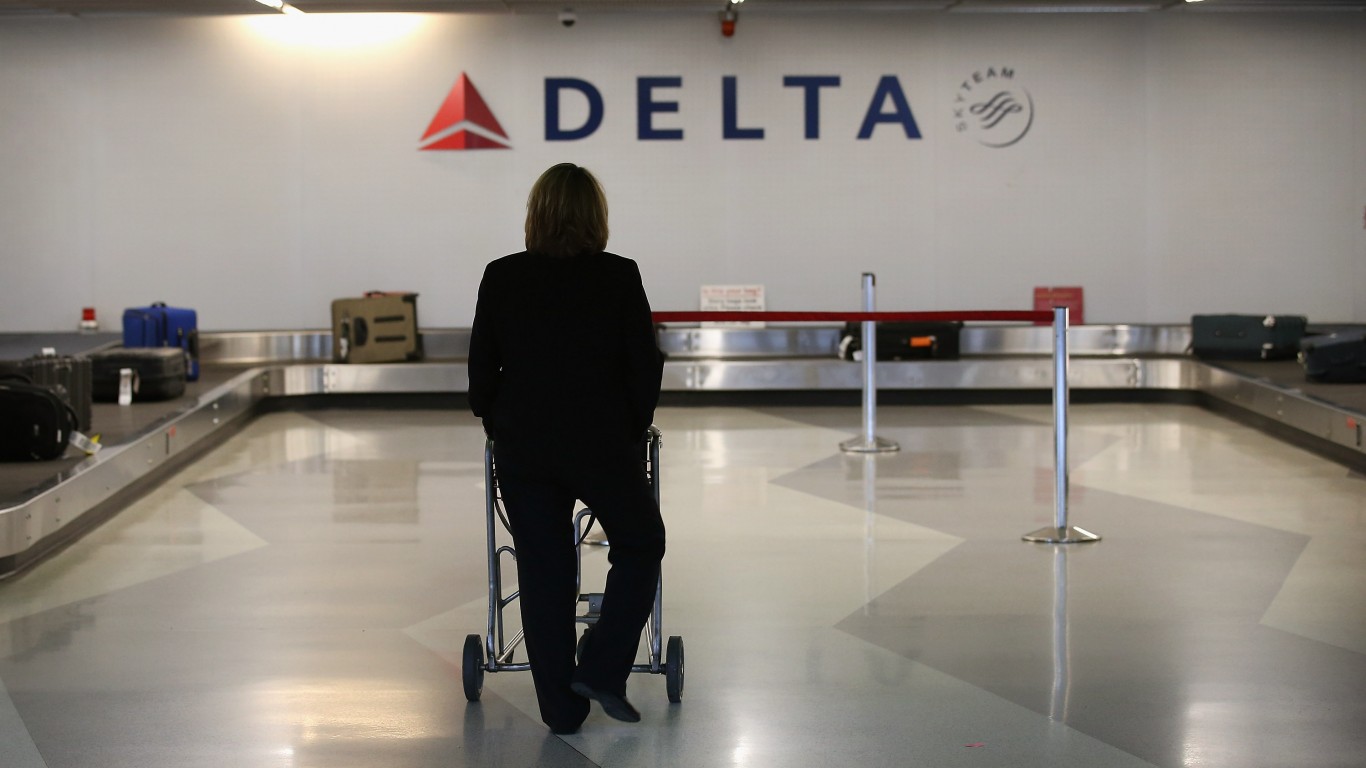 24/7 Wall St.
24/7 Wall St.

 24/7 Wall St.
24/7 Wall St.


